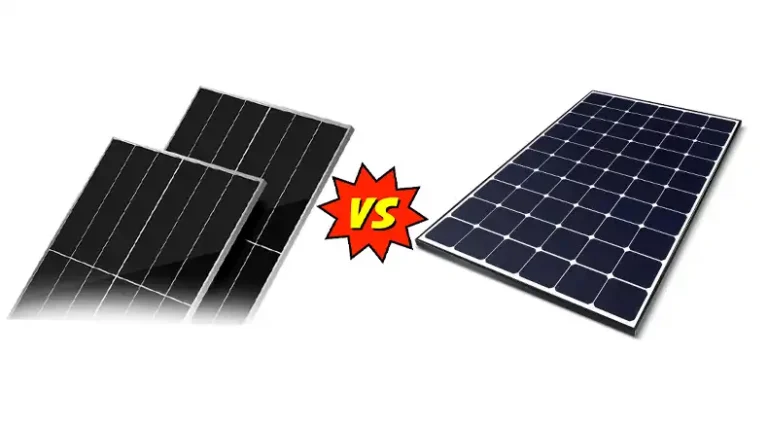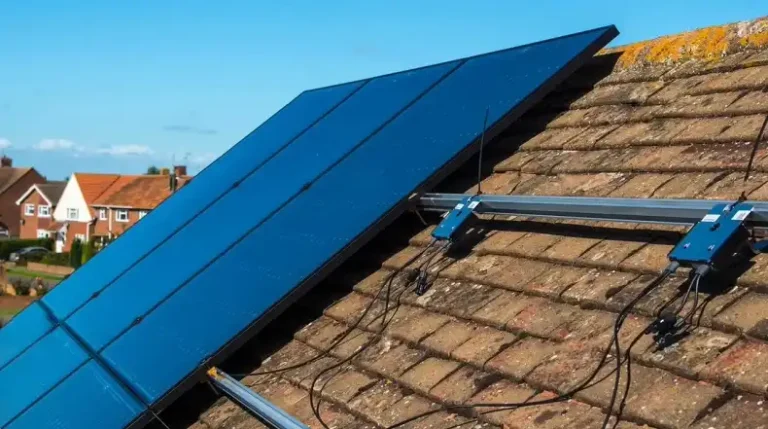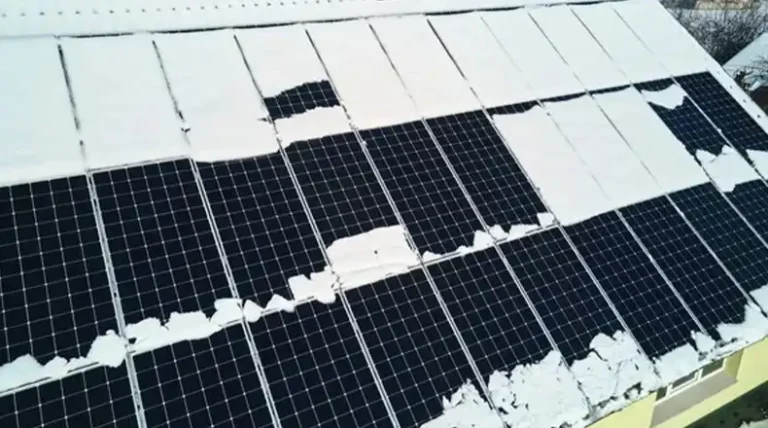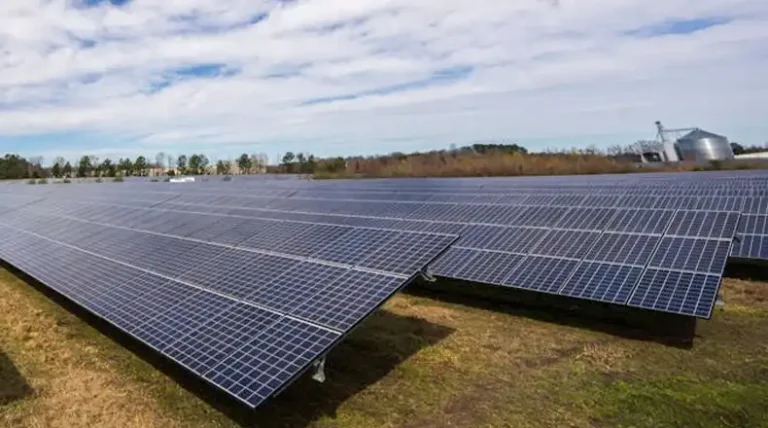How Do You Calculate Solar Panel Output?
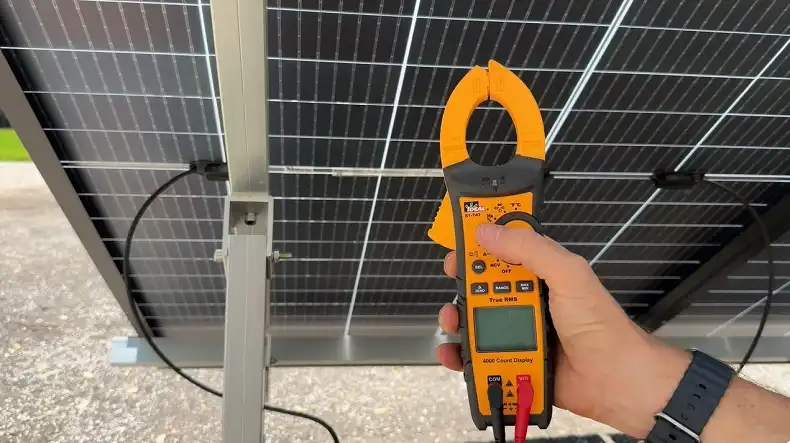
Calculating solar panel output is crucial for anyone considering a switch to solar energy, but it’s not as straightforward as you might think.
While solar panels come with a rated power (e.g., 300W or 400W), this doesn’t necessarily reflect the actual electricity they’ll produce in real-world conditions.
Numerous factors impact a panel’s performance, making it essential to understand how to estimate output accurately.
This article will guide you through the process of calculating solar panel output, taking into account various influencing factors.
By the end, you’ll have a clear understanding of how to determine the potential electricity generation from your solar panels, helping you make informed decisions about your solar energy system.
Now, let’s dive into the details of understanding and calculating solar panel output.
Understanding Solar Panel Output
When it comes to solar panels, there’s often confusion between rated power and real-world output. It’s important to understand the difference to set realistic expectations for your solar energy system.
Rated Power Vs. Real-World Output
Rated power, typically measured in watts (W), represents the maximum amount of electricity a solar panel can generate under ideal conditions.
For example, a panel might be rated at 300W or 400W. However, in real-world scenarios, the actual output is usually lower due to various factors.
The average solar panel in the United States produces around 300 watts of power per hour, or 0.3 kWh (kilowatt-hours). But this number can vary significantly depending on several factors.
Factors Affecting Solar Panel Output
Several elements influence how much electricity your solar panels will actually produce:
- Sunlight availability: The amount of direct sunlight your panels receive is crucial.
- Panel efficiency: How effectively the panel converts sunlight into electricity.
- Geographic location: Affects the number of peak sun hours.
- Panel orientation and tilt: Proper positioning maximizes sunlight exposure.
- Temperature: Extreme heat can reduce panel efficiency.
- Shading: Obstructions that block sunlight decrease output.
- Weather conditions: Cloud cover and other weather factors impact performance.
Understanding these factors is key to estimating your solar panel output accurately. In the next section, we’ll look at how to calculate this output using simple formulas.
Calculating Solar Panel Output
Now that we understand the factors affecting solar panel output, let’s dive into how to calculate it. We’ll cover two main methods: a basic formula for daily output and a more comprehensive formula for annual energy output.
Basic Formula For Daily Output
To estimate your solar panel’s daily output, you can use this simple formula:
Daily Output (kWh) = Wattage (W) x Hours of Sunlight x Efficiency
Let’s break this down with an example:
Suppose you have a 300-watt solar panel that receives an average of 5 hours of direct sunlight per day. Assuming an efficiency of 20% (or 0.2), your calculation would look like this:
Daily Output (kWh) = 300 W x 5 hours x 0.2 = 3 kWh
This means your solar panel would produce approximately 3 kWh of electricity on an average day.
Formula For Annual Energy Output
For a more comprehensive calculation of your solar panel’s annual energy output, you can use this formula:
E = A * r * H * PR
Where:
E = Energy (kWh)
A = Total solar panel area (m2)
r = Solar panel yield or efficiency (%)
H = Annual average solar radiation on tilted panels (shadings not included)
PR = Performance ratio, coefficient for losses (range between 0.5 and 0.9, default value = 0.75)
This formula takes into account more variables, providing a more accurate estimate of your panel’s annual output.
Standard Test Conditions (STC)
When manufacturers rate their solar panels, they use Standard Test Conditions (STC). These conditions include:
- Operating temperature of 25°C (77°F)
- Full solar noon sunshine (irradiance) of 1000 W/m2 (1 kW/m2)
- Sea level air mass (AM) of 1.5 (1 sun)
It’s important to note that these ideal conditions rarely exist in the real world, which is why actual output is typically lower than the rated power.
Understanding these calculation methods and the concept of STC helps you set realistic expectations for your solar panel’s performance. In the next section, we’ll delve deeper into the factors that impact solar panel output.
Factors Impacting Solar Panel Output
As we’ve mentioned, several factors can significantly affect your solar panel’s output. Let’s explore each of these in more detail to understand how they influence your system’s performance.
1. Solar Panel Efficiency
Solar panel efficiency measures how effectively a panel converts sunlight into electricity. Most solar panels have an efficiency rating between 15% and 20%. Higher-quality panels can reach efficiencies of up to 23%.
Efficiency is crucial because it directly impacts how much power your panels can generate from the available sunlight.
For instance, a panel with 20% efficiency will produce more electricity than a panel of the same size with 15% efficiency, given the same amount of sunlight.
2. Location And Orientation
Your geographic location plays a significant role in determining your solar panel’s output. Areas closer to the equator generally receive more direct sunlight throughout the year, resulting in higher energy production potential.
The orientation of your panels is equally important. In the Northern Hemisphere, south-facing panels typically receive the most sunlight.
The tilt angle of your panels also matters – ideally, it should be equal to your location’s latitude for year-round optimization.
3. Climate And Weather Conditions
Local climate and weather patterns have a substantial impact on solar panel output:
- Cloud cover: Reduces the amount of direct sunlight reaching your panels.
- Temperature: While sunlight is necessary for solar panels to work, excessive heat can actually reduce their efficiency.
- Seasonal changes: The angle and duration of sunlight vary throughout the year, affecting output.
4. Panel type and quality
Different types of solar panels have varying efficiencies and performance levels:
- Monocrystalline panels: Typically the most efficient, with ratings around 20-23%.
- Polycrystalline panels: Slightly less efficient, usually between 15-17%.
- Thin-film panels: Generally the least efficient, ranging from 6-15% depending on the technology used.
Higher quality panels tend to be more efficient and durable, potentially offering better long-term performance.
5. Maintenance And Cleanliness
Regular maintenance and cleanliness can significantly impact your solar panel’s output:
- Dirt and debris: Can block sunlight and reduce efficiency.
- Damage: Cracks or other physical damage can decrease performance.
- Degradation: Panels naturally degrade over time, losing about 0.5-1% efficiency per year.
Regular cleaning and inspections can help maintain optimal performance.
Understanding these factors allows you to make informed decisions about your solar panel system and set realistic expectations for its output.
In the next section, we’ll discuss why accurate output calculations are so important.
Importance of Accurate Solar Panel Output Calculations
Calculating solar panel output accurately is crucial for several reasons. It helps you make informed decisions about your solar energy system and set realistic expectations for its performance.
Let’s explore why these calculations are so important.
Determining System Size
One of the primary reasons for calculating solar panel output is to determine the right size for your solar energy system. By understanding how much electricity your panels can produce, you can:
Match Your System Size To Your Energy Needs:
If you know how much electricity you typically consume and how much your panels can produce, you can ensure your system is neither too small (leaving you short on power) nor too large (wasting money on unnecessary capacity).
Plan For Future Needs:
If you anticipate your energy needs increasing in the future (e.g., adding an electric vehicle or expanding your home), you can factor this into your calculations and potentially install a larger system.
Optimize Roof Space:
Accurate calculations help you make the most of your available roof space, ensuring you install the right number of panels to meet your energy goals.
Estimating Energy Production And Savings
Accurate solar panel output calculations also allow you to:
Estimate potential savings:
By knowing how much electricity your system will produce, you can calculate how much you’ll save on your energy bills. This is crucial for determining the return on investment (ROI) of your solar installation.
Understand payback period:
The payback period is how long it takes for your energy savings to cover the initial cost of the system. Accurate output calculations help you estimate this timeframe more precisely.
Plan for energy storage:
If you’re considering adding a battery storage system, knowing your panel output helps you determine the appropriate battery size.
Evaluate net metering benefits:
If your utility offers net metering (where you can sell excess electricity back to the grid), understanding your panel output helps you estimate potential credits.
Set realistic expectations:
Accurate calculations help prevent disappointment by giving you a realistic idea of what to expect from your solar energy system.
By understanding the importance of these calculations, you can make more informed decisions about your solar energy system. In the next section, we’ll provide some tips for maximizing your solar panel output.
Tips for Maximizing Solar Panel Output
Now that we understand how to calculate solar panel output and why it’s important, let’s look at some strategies to maximize the performance of your solar energy system.
Choose high-efficiency panels:
Opt for panels with higher efficiency ratings. While they may cost more upfront, they can produce more power over time, potentially leading to greater savings.
Optimize panel orientation and tilt:
Ensure your panels are facing the optimal direction (typically south in the Northern Hemisphere) and tilted at an angle equal to your latitude for year-round performance.
Consider a solar tracking system:
These systems adjust the angle of your panels throughout the day to follow the sun, potentially increasing energy production by 25-35%.
Keep panels clean:
Regularly clean your panels to remove dirt, dust, and debris that can reduce efficiency. In most cases, rain will do the job, but occasional manual cleaning may be necessary.
Trim nearby trees:
If possible, trim trees or other vegetation that may shade your panels during peak sunlight hours.
Monitor system performance:
Use monitoring software to track your system’s output. This can help you quickly identify and address any issues affecting performance.
Invest in quality inverters:
High-quality inverters can improve the overall efficiency of your system by minimizing energy loss during the conversion from DC to AC power.
Consider micro-inverters or power optimizers:
These devices can help mitigate the impact of partial shading on your system’s overall performance.
Plan for seasonal variations:
Understand how your system’s output may change throughout the year and plan accordingly. You might adjust your energy usage habits or consider additional panels or storage for lower-production months.
Regular maintenance:
Schedule regular check-ups with a professional to ensure all components of your system are functioning optimally.
By implementing these strategies, you can help ensure your solar panel system operates at its highest potential, maximizing your energy production and savings.
Conclusion
Calculating solar panel output is a crucial step in planning and implementing a solar energy system.
While it may seem complex at first, understanding the factors that influence output and how to estimate it can help you make informed decisions about your solar investment.
Remember, the rated power of a solar panel is just a starting point. Real-world conditions, including location, climate, panel efficiency, and system design, all play significant roles in determining actual output.
By using the formulas and considering the factors we’ve discussed, you can develop a more accurate picture of what to expect from your solar panels.

